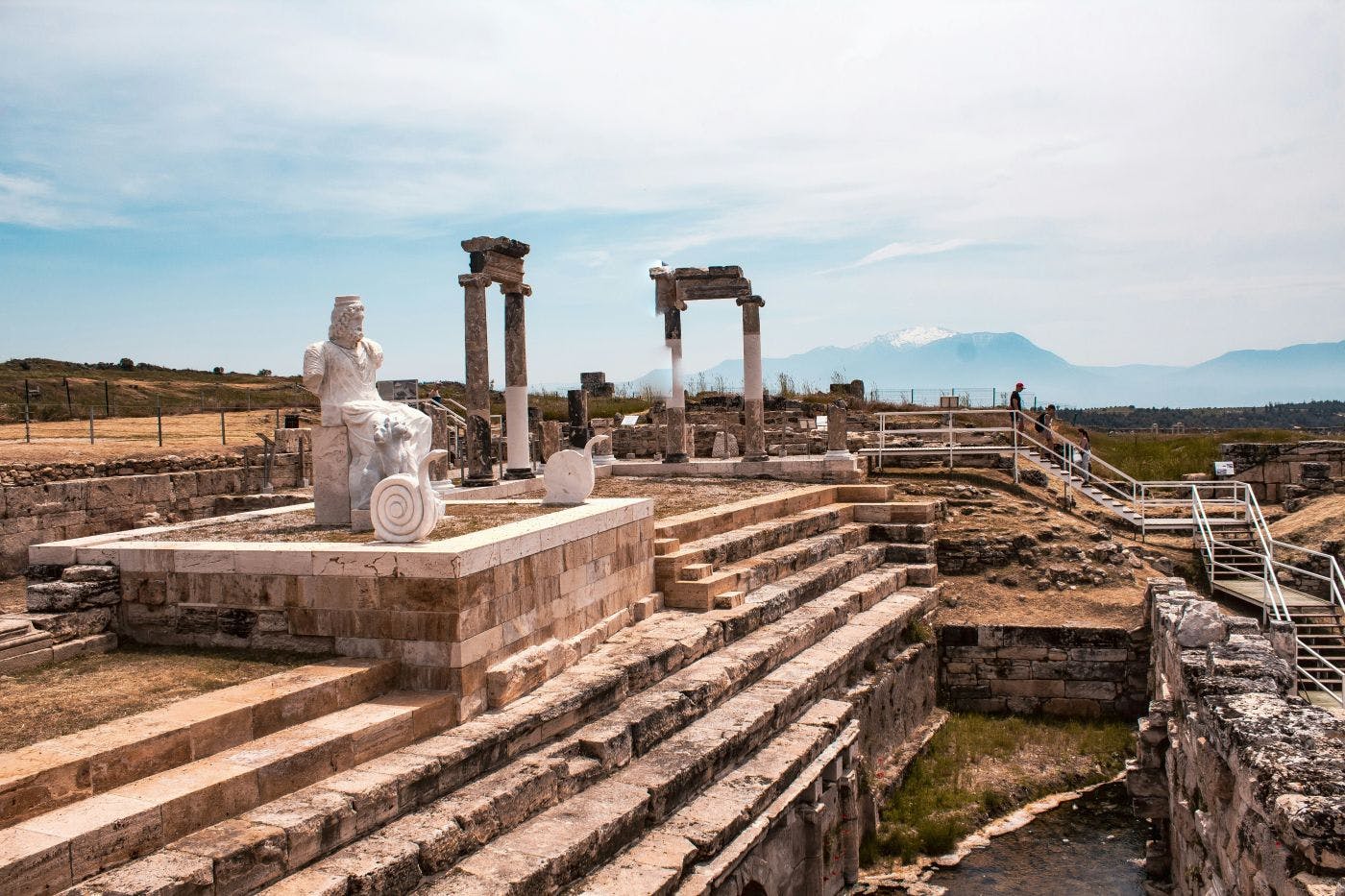
And this is where it gets interesting for branding: if humans have patterns that make them behave, respond, and engage in predictable ways, could brands too have “humors”—distinct, core tendencies that shape their interactions with audiences, their marketing choices, and their cultural presence?
Many years ago, back in my Disney days, I was going through a low spot. I was depressed, artistically unfulfilled, and in need of some help. I had a friend who was working his way through medical school, following the traditions of Chinese medicine. He encouraged me to visit the clinic and see a doctor there. So, I did.
The doctor tried all sorts of things—cupping on my back, acupuncture, sound bowls—and asked me countless questions. I felt a little better after the acupuncture, but his grand diagnosis was that I had too much bile, my humors were dark, and I should stop eating spicy foods to feel better.
I don’t want to disparage him; he was trying to help. The acupuncture helped me relax, and the cupping really did smooth out my mood and ease those deep bouts of depression. But the bottom line was—and still is—I am clinically depressed, I was drinking like a character from an O’Neill play, and I needed serious therapy. There was nothing in his cabinets of herbs, roots, and small brown bottles, and nothing about eating fewer spicy tacos, that would truly fix the problem. Still, some of his methods did provide a bit of relief.
Recently, I did a production of Shakespeare’s The Taming of the Shrew, and I was acutely aware of the references to Kate’s “black bile” and her humors being out of whack. I realized that this terminology, this mindset, came from the Greeks—men like Galen—who wrote about the humors and how an imbalance could make us depressed, fiery, or otherwise unbalanced. And it got me thinking: what if brands, like people, also have “humors” that affect how they show up in the world and how the market responds to them?
The Four Humours and What They Teach Us About Personality
Long before modern psychology gave us personality tests and Big Five charts, the Greeks were already trying to map out what made people tick. Hippocrates and later Galen proposed that our moods, dispositions, and even physical health were shaped by the balance of four bodily fluids—what came to be known as the humours: blood, yellow bile, black bile, and phlegm.
Each humour was associated with a type of personality. The sanguine, dominated by blood, were cheerful, social, and energetic—spring-like in their warmth and vibrancy. Cholerics, high in yellow bile, were ambitious, fiery, and prone to anger—summer-like in intensity. Melancholics, governed by black bile, were thoughtful, introspective, and prone to sadness—winter-like and reflective. Phlegmatics, rich in phlegm, were calm, steady, and reliable—autumn-like in their tranquility.
These classifications were more than idle speculation. They informed how people were advised to eat, where they should live, and even what kinds of work they might pursue. A melancholic might be steered toward warming foods and lively social interaction to counteract the cold and dry nature of their humour, while a phlegmatic might be encouraged to avoid overly watery foods and seek stimulation to prevent stagnation.
Remarkably, this system persisted for centuries, shaping not just medical practice but also literature, philosophy, and culture. Shakespeare’s characters, for example, are often readable through the lens of the humours: the impulsive, fiery hero, the brooding melancholic, the easygoing comic relief. Even today, we recognize these archetypes in the way we describe people—“fiery,” “moody,” “steady,” “cheerful”—a linguistic echo of a system developed thousands of years ago.
The idea that personality could be traced back to underlying biology resonates even now. Modern psychologists, from Hans Eysenck to proponents of the Big Five, have sought to map temperament to neurobiology, exploring how nervous system sensitivity and neurotransmitter activity shape who we are. While the humours themselves have been discredited, the basic intuition—that personality is both patterned and biologically influenced—remains.
And this is where it gets interesting for branding: if humans have patterns that make them behave, respond, and engage in predictable ways, could brands too have “humors”—distinct, core tendencies that shape their interactions with audiences, their marketing choices, and their cultural presence? Just as a person’s sanguine nature might make them magnetic at a party, could a brand’s “sanguine” tendencies make it vibrant, approachable, and socially engaging?
Just as the ancients believed that too much yellow bile could make someone irritable, and too much phlegm could make them lethargic, brands, too, can fall out of balance. A company flooded with “fire” — overly aggressive messaging, impulsive launches, or hyperbolic promises — risks alienating its audience. A brand weighed down by too much “phlegm” — cautious, slow-moving, and overly safe — can stagnate, fading quietly into the background. The health of a brand isn’t just about individual campaigns or products; it’s about the ecosystem in which it lives: how messaging, culture, customer experience, and market perception flow together to create an overall temperament.
Understanding a brand’s personality, much like assessing a person’s humoral balance, helps reveal both strengths and vulnerabilities. Is your brand inspiring excitement (sanguine) or generating anxiety (choleric)? Is it seen as dependable and comforting (phlegmatic) or withdrawn and hard to engage (melancholic)? Identifying these tendencies is the first step in bringing a brand into equilibrium, shaping an ecosystem that is resilient, compelling, and adaptable over time.

Mapping the Four Humours to Brand Personality
Just as humans have predictable temperaments, brands too exhibit patterns in the way they behave, communicate, and engage with the world. Borrowing from the humoral framework, we can imagine four “brand humours,” each with its own tendencies, strengths, and challenges.
Sanguine Brands – The Social Butterflies<br />Vibrant, playful, and approachable, sanguine brands thrive on energy and connection. They’re the brands that make you smile when you see them, that delight with witty campaigns, and that effortlessly create communities around shared experiences. Think brands that embrace fun, spontaneity, and engagement—like Lego, Netflix, or Ben & Jerry’s. Sanguine brands are generally loved by many but can struggle with consistency, sometimes spreading themselves too thin across campaigns or initiatives.
Choleric Brands – The Ambitious Leaders<br />Bold, decisive, and driven, choleric brands are leaders in their categories. They take risks, assert authority, and often set trends rather than follow them. Their fiery energy commands attention, making them ideal for disruptive startups or brands that want to dominate in a competitive market. Examples might include Tesla, Nike, or Apple in its heyday. Choleric brands inspire loyalty and respect, but must be careful not to alienate audiences by coming across as arrogant or unapproachable.
Melancholic Brands – The Thoughtful Strategists<br />Analytical, precise, and often serious, melancholic brands excel in reliability and depth. They focus on quality, expertise, and building trust over time. Think brands like The New York Times, Rolex, or Patagonia—brands that value craftsmanship, integrity, and thoughtful engagement over flash. Melancholic brands can risk being perceived as too serious or inaccessible, but when executed well, they foster enduring relationships and deep respect.
Phlegmatic Brands – The Steady Companions<br />Calm, dependable, and consistent, phlegmatic brands are the ones you can rely on, day in and day out. They excel in service, stability, and building long-term loyalty. Grocery chains, banks, or household staples often fall here—brands like Target, IKEA, or Campbell’s. Phlegmatic brands avoid controversy and innovation for innovation’s sake, but their quiet stability can sometimes make them invisible in crowded markets unless they find a way to stand out.
By understanding your brand’s “humour,” you gain insight into its natural tendencies, how it resonates with audiences, and where it may need to adjust to achieve balance. Much like human personalities, no humour is inherently better than another—they simply play different roles in the market ecosystem.
This framework also helps with strategic consistency: a brand that tries to be sanguine, choleric, melancholic, and phlegmatic all at once risks confusing its audience. Knowing which humour dominates allows you to double down on strengths while making calculated adjustments where necessary, creating a more harmonious brand personality.
Understanding which humour a brand most closely resembles is just the first step. The real power comes from applying these insights strategically—shaping messaging, products, and customer interactions in ways that align with a brand’s intrinsic personality. By viewing brands through the lens of the four humours, we can begin to see not just isolated touchpoints, but the entire brand ecosystem—and how each element interacts to create a coherent, living whole.
Applying Brand Humours to Strategy and Brand Ecology
Once you’ve identified your brand’s dominant humour, the real work begins: understanding how it behaves in the broader market ecosystem. Just as human personalities interact in complex ways—sometimes complementary, sometimes clashing—brands live in networks of competitors, collaborators, audiences, and cultural currents. Thinking in terms of brand ecology means recognizing that your brand doesn’t exist in isolation; it exists in relationship to everything else in its environment.
Sanguine Brands in the Ecosystem<br />Sanguine brands thrive on interaction. They draw audiences in, spark conversations, and are natural collaborators. In an ecosystem, they often act as connectors, bringing together communities, influencers, and complementary brands. Their challenge is avoiding overextension—too many partnerships or initiatives can dilute their charm. The strategic question for a sanguine brand is: how do you maximize engagement without losing your identity?
Choleric Brands in the Ecosystem<br />Choleric brands assert influence. They set trends, lead categories, and shape market expectations. Within an ecosystem, they often act as keystone species, defining norms and forcing others to adapt. But their ambition can intimidate partners or provoke backlash if they overreach. Strategically, choleric brands must strike a balance between leadership and empathy, dominating the conversation without monopolizing it entirely.
Melancholic Brands in the Ecosystem<br />Melancholic brands build depth and trust. In the ecosystem, they are the anchors—reliable sources of expertise, quality, and thoughtful engagement. Other brands often look to them for guidance or stability. Their strategic risk lies in over-caution; ecosystems reward innovation as well as reliability. Melancholic brands must find ways to influence the ecosystem without abandoning the meticulous, trustworthy identity that defines them.
Phlegmatic Brands in the Ecosystem<br />Phlegmatic brands are the quiet stabilizers. They maintain consistency, foster loyalty, and create dependable experiences across touchpoints. In an ecosystem, they often serve as the connective tissue, ensuring that relationships—between brands, partners, and audiences—remain steady. Their challenge is remaining visible. A phlegmatic brand must find subtle ways to assert presence and relevance while preserving its hallmark stability.
Balancing Humours in the Market<br />Just as individual health relied on balance among the four humours, a healthy brand ecosystem benefits from a mix of temperaments. Sanguine brands energize the network, cholerics drive change, melancholics maintain rigor, and phlegmatics ensure stability. Brands that understand their own temperament—and the temperaments of the ecosystem around them—can position themselves more strategically, choosing the right partnerships, campaigns, and innovations at the right time.
By applying this lens, leaders can make more informed decisions about how to evolve a brand, interact with competitors and collaborators, and anticipate audience expectations. Brand ecology isn’t about controlling the ecosystem—it’s about understanding how the different humours coexist and influence one another, and how your brand can thrive within that dynamic.

Diagnosing Your Brand’s Humour (and Prescribing Action)
Before you can act, you need to understand your brand’s temperament. Just as a physician once examined patients for excesses or deficiencies in their humours, leaders today can assess their brand’s dominant traits and identify where balance is needed.
Step 1: Assess Your Brand Personality<br /> Ask yourself: if my brand were a person, how would it behave? Some guiding questions:
- Does it energize audiences and spark interaction, like a sanguine?<br />
- Does it assert authority and lead trends, like a choleric?<br />
- Does it build trust and demonstrate expertise, like a melancholic?<br />
- Does it maintain stability and reliability, like a phlegmatic?<br />
Map your answers to the four humours framework. Most brands aren’t pure types—they’re blends—but identifying the dominant temperament helps clarify strategy.
Step 2: Analyze the Ecosystem<br />Examine the market and your brand’s environment. Which temperaments dominate your category? Are your competitors choleric, setting trends, and taking risks? Are partners or adjacent brands primarily sanguine, driving engagement? Understanding the ecosystem helps you decide how to position your brand—whether to complement, compete, or stabilize.
Step 3: Identify Imbalances<br />A brand with an excess of one humour can face challenges. Examples:
- Overly choleric brands risk alienating audiences if they feel aggressive or domineering.<br />
- Overly sanguine brands may struggle with consistency, diluting their impact.<br />
- Overly melancholic brands can appear rigid or slow to adapt.<br />
- Overly phlegmatic brands risk invisibility, blending into the background.<br />
Recognizing imbalances is the first step toward corrective action.
Step 4: Prescribe Interventions<br />Based on your diagnosis, take actions that restore balance and enhance your brand’s ecosystem fit:
- Sanguine boost: Launch interactive campaigns, foster community participation, and partner with dynamic collaborators.<br />
- Choleric refinement: Lead initiatives and innovate, but pair authority with empathy to avoid overstepping.<br />
- Melancholic focus: Emphasize thought leadership, quality, and reliability, while integrating small but strategic innovations.<br />
- Phlegmatic reinforcement: Highlight consistency and trustworthiness, while seeking subtle opportunities for visibility.<br />
Step 5: Iterate and Monitor<br />Brands, like humans, aren’t static. Market dynamics, audience expectations, and internal evolution require ongoing recalibration. Regularly reassess your brand’s temperament, the surrounding ecosystem, and the impact of your interventions. Over time, brands that maintain a healthy humoural balance can achieve sustained growth, loyalty, and influence.
Brands in Four Humours: Real-World Examples
To make the concept more tangible, let’s imagine the humours as brand personalities. These are not rigid categories—most brands are mixtures—but they help illustrate how temperament shapes strategy, customer experience, and ecosystem positioning.
1. Sanguine: The Life of the Party<br />Sanguine brands are energetic, outgoing, and highly engaging. They thrive on interaction, social proof, and excitement. Think brands that are constantly creating buzz, encouraging participation, and building community.
Example: Red Bull
- Explosive energy, high-octane experiences, and sponsorship of extreme sports.<br />
- The brand thrives by being highly visible and interactive, drawing audiences into shared experiences.<br />
- In brand ecology terms, Red Bull energizes its ecosystem, driving engagement not only with consumers but also with partners and content creators.<br />
2. Choleric: The Bold Leader<br />Choleric brands are assertive, confident, and driven by results. They take charge, set trends, and are unafraid of controversy or disruption. These brands are natural leaders, pushing boundaries to shape the market.
Example: Tesla
- Bold innovation, high visibility, and a disruptive approach to automotive and energy markets.<br />
- Tesla leads trends and challenges conventions, sometimes polarizing audiences.<br />
- Within its ecosystem, Tesla commands influence, shaping both consumer expectations and competitor behavior.<br />
3. Melancholic: The Expert Strategist<br />Melancholic brands are deliberate, thoughtful, and reliable. They emphasize quality, credibility, and careful planning. While they may move more slowly, their influence is durable, grounded in trust and expertise.
Example: Patagonia
- Meticulous attention to sustainability, quality, and environmental responsibility.<br />
- Patagonia’s measured, conscientious approach builds long-term loyalty and trust.<br />
- The brand enhances its ecosystem by setting standards and educating consumers and partners alike.<br />
4. Phlegmatic: The Calm Stabilizer<br />Phlegmatic brands are consistent, dependable, and reassuring. They provide stability and predictability, often excelling at retention and loyalty over flashiness or disruption.
Example: IKEA
- Consistency in design, quality, and customer experience across markets worldwide.<br />
- IKEA remains approachable and reliable, even amid changing trends.<br />
- Within its ecosystem, IKEA supports both suppliers and consumers by maintaining a steady, dependable presence.<br />
Why This Matters for Brand Strategy<br />Understanding where your brand sits—and where it needs to shift—enables you to make intentional choices about messaging, product innovation, partnerships, and ecosystem interactions. Just as in humoral theory, too much of one temperament can create friction, while the right balance can amplify your influence and resonance.

What’s Your Brand’s Humour? A Diagnostic Exercise
Just like humans, brands rarely fit neatly into one personality box. But understanding the dominant “humour” of your brand can give you clarity about how you interact with customers, competitors, and your broader ecosystem. Use this simple diagnostic to see where your brand lands—and where it might need a little balancing.
Step 1: Rate your brand’s natural tendencies<br /> For each of the following statements, assign a score from 1 (rarely) to 5 (always):
Sanguine (Energetic & Social)
- Our brand thrives on excitement and visibility.<br />
- We actively engage our audience across multiple channels.<br />
- Community-building and social proof are central to our strategy.<br />
Choleric (Bold & Assertive)
- We lead trends rather than follow them.<br />
- Our messaging is confident, sometimes even provocative.<br />
- We prioritize innovation and disruption in our market.<br />
Melancholic (Thoughtful & Credible)
- Quality and reliability are more important than speed or flash.<br />
- We approach strategy with careful planning and research.<br />
- Our brand is respected as an authority in our field.<br />
Phlegmatic (Calm & Steady)
- Consistency is key in our messaging and customer experience.<br />
- Our brand acts as a stabilizer in our market.<br />
- Retention and loyalty drive our long-term strategy.<br />
Step 2: Identify your dominant humour
- Add up your scores for each humour.<br />
- The highest score indicates your brand’s current dominant temperament.<br />
- If two scores are close, your brand may be a hybrid, drawing strength from multiple humours.<br />
Step 3: Spot opportunities for balance
- If your brand is overly choleric, consider ways to humanize your approach (a touch of phlegmatic steadiness).<br />
- If your brand is highly melancholic, explore ways to engage more energetically with your audience (lean into sanguine energy).<br />
- Use your humour as a guide for messaging, partnerships, product development, and ecosystem engagement.<br />
Step 4: Think about your ecosystem
- Which humours dominate your competitors?<br />
- Are there gaps in the market your humour could fill?<br />
- How does your brand’s temperament influence the health and vibrancy of your overall ecosystem?<br />
By the end of this exercise, you’ll have a clearer picture of your brand’s personality—and some ideas about how to leverage or recalibrate it to thrive within your market ecosystem.
Humours in Action: Why Brand Ecology Needs Balance
A brand doesn’t exist in isolation—it’s part of a living ecosystem. Just as humans are influenced by their environment, a brand’s success depends on how its “humour” interacts with the market, customers, competitors, and even cultural trends. This is where the concept of brand ecology comes in: thinking of your brand as a node in a network, where each connection either nurtures or drains its vitality.
For instance:
- Sanguine brands excel in engagement and virality. They energize the ecosystem, spark conversations, and can drive trends. But if unchecked, they can overwhelm or distract their audience, leaving loyalty fragile.<br />
- Choleric brands disrupt and lead the market. Their boldness can inspire followers and competitors alike, but over-aggressiveness risks alienating partners or burning bridges.<br />
- Melancholic brands provide expertise, trust, and authority. They anchor the ecosystem with credibility, but if too rigid, they may stagnate and miss emerging opportunities.<br />
- Phlegmatic brands offer consistency and reliability. They stabilize markets and nurture long-term relationships, but over-caution can make them invisible in a fast-moving world.<br />
The healthiest ecosystems—whether biological or commercial—are diverse and balanced. A brand that leans too heavily into one humour may dominate in one dimension, but its ecosystem suffers when other humours are missing. By understanding your brand’s dominant temperament and identifying gaps, you can make strategic choices that strengthen not just your brand, but the health of the entire market environment you inhabit.
In practical terms, this might look like:
- Storytelling: Align your brand voice with your humour, while borrowing traits from complementary humours to keep your messaging multidimensional.<br />
- Partnerships: Seek collaborations that introduce balancing humours—sanguine energy for a melancholic brand, phlegmatic steadiness for a choleric one.<br />
- Innovation: Use your dominant humour as your guiding lens, but don’t ignore the benefits of cross-humour experimentation.<br />
- Customer Experience: Match interactions to the expected temperament of your audience, and consider how your humour resonates with or challenges their expectations.<br />
Thinking in terms of humours allows marketers to go beyond superficial branding tactics and consider how personality and ecosystem interact over time, creating sustainable engagement and long-term resilience. Shakespeare’s cholerics and melancholics weren’t just fun stories—they were early lessons in how temperament shapes interaction. Today, brands face the same reality: balance your humours, and your ecosystem thrives.

Summing Up: Why Understanding Your Brand’s Humour Matters
Just as the ancient Greeks looked to the four humours to understand the balance of the human body and personality, today’s brands can benefit from recognizing their own “humours” to maintain health, resilience, and relevance in the marketplace. Each humour—choleric, melancholic, sanguine, phlegmatic—offers a lens through which to view your brand’s tendencies, strengths, and potential blind spots.
Mapping your brand to a humour is not about putting it in a rigid box. It’s about seeing patterns, understanding behavior, and making strategic choices that ensure your brand thrives within its ecosystem. Like a person, a brand that is too heavy on one humour may overreact, underperform, or fail to connect with its audience. Balance, observation, and intentional action are key.
At ThoughtLab, we help brands not just identify their humours, but translate that insight into actionable strategy—whether it’s shaping messaging, refining product offerings, or cultivating customer relationships. By applying the lessons of humours to brand ecology, organizations can create a harmonious system where every element of the brand supports the others, driving long-term growth and resonance.
In the end, understanding your brand’s humour is more than a metaphor—it’s a practical framework for diagnosis, adjustment, and growth. The question isn’t just what your brand is, but how it can thrive in its ecosystem. Start by observing, diagnosing, and iterating. Your brand’s health depends on it.
The humours may be ancient, but the lesson is modern: harmony in character creates harmony in your brand’s world.

